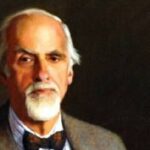Human Relations Theory by Elton Mayo

Human Relations Theory of Management: this article describes the Human Relations Theory of Management, developed by Elton Mayo in a practical way. Next to what this theory is, this article also highlights the Personal Attention, the Characteristics, the soft side and the Complex humanity. Enjoy reading!
What is Human Relations Theory of Management?
The immediate period after World War Two saw a different approach in organisational studies.
Until that time, there was only talk of Scientific Management, which mainly focused on productivity, efficient division of labour and workers as an extension of machinery.
1950 saw a change to this discourse with the introduction of the Human Relations Theory of Management. This movement saw workers in a different light; they were now seen as thinking beings with needs, who liked to receive attention. Companies realised that attention motivated employees and even allowed them to get more out of themselves for the benefit of the organisation.
What is the Hawthorne Experiment?
Elton Mayo is considered the founder of the Human Relations Theory of Management.
Prior to this trend, Elton Mayo already started an experiment in the Hawthorne plants in 1924; the Hawthorne experiment.
There was a great deal of discontent among the 30,000 workers in the Hawthorne plants in Chicago in the early twenties of the last century. This was somewhat peculiar, because this phone parts plant already acted extremely progressively towards its workers (through pensions and sickness benefits), something which was almost unthinkable in this period.
Elton Mayo and his assistants, including Fritz Roetlishberger, conducted research into changing working conditions.
They experimented with light, duration of breaks and working hours. A group of women were exposed to either more or less light. It turned out that, regardless of the amount and duration of lighting, this had a positive effect on their performances. The same was true for rest periods; shorter or longer breaks both led to an increase in labour productivity.
Personal Attention
The conclusion drawn from the Hawthorne research was that giving attention to employees resulted in improved performances.
The group of workers who were involved in the search felt their voices heard and experienced a feeling of greater personal freedom. The workers were pleased that their assistance was requested, which they believed led to their higher job performances.
Moreover, during the study, senior officials regularly visited the workplace, making the workers feel like they belonged to a certain elite group. This personal attention stimulated the group to work even harder together and give their all for the organisation. Collaboration in an informal group is also one of the main aspects of the Human Relations Theory.
Elton Mayo concluded that the needs of workers were often based on sentiment (belonging to a group and thus having a sense of value) and that this could lead to conflicts with managers, who mainly focused on cost reduction and efficiency.
And thus he came to the following final conclusions:
- Individual employees must be seen as members of a group;
- Salary and good working conditions are less important for employees and a sense of belonging to a group;
- Informal groups in the workplace have a strong influence on the behaviour of employees in said group;
- Managers must take social needs, such as belonging to an (informal) group, seriously.
Human Relations Theory : Labour Motivation
In the era of the Human Relations Theory of Management, the concept of ‘labour motivation’ is given a new meaning compared to the Scientific Management era.
The fact that personal attention led to improved performances was a completely new perspective.
The term workers is gradually replaced with employee, which more explicitly implies that these people are thinking people who can positively contribute to the organisation.
Characteristics
Starting in the 1950s, a definitive different approach to management emerges. Employee behaviour is placed centrally and the Human Relations theory places strong emphasis on the fact that organisations consist of groups of people.
Human Relations Theory supporters thus replace the mechanistic perspective on management with a people-oriented perspective. Every person is unique and therefore unpredictable. Their behaviour is complex and to fully understand them it is important to recognise their personal motivations.
Human Relations Theory: Soft side
The way employees think and act at work is not only influenced by rules, procedures and requirements imposed by management.
Attention, respect, interest shown and social / interpersonal relationships are just as important. These kind of human interactions trigger an emotional sense in employees, which is often referred to as a person’s soft side.
This soft side consists of emotional or irrational logic and can strengthen rational logic, but at the same time also weaken or eliminate it. Rational logic focuses on production and effectiveness, and both can thus diametrically be opposed to each other, which in turn leads to internal conflicts and dilemmas.
Complex humanity
The complexity of human behaviour increases even more if an employee indicates his desires and knows when he will make certain decisions. From a behavioural perspective, employees can also decide what behaviour they prefer and how this behaviour manifests itself. As a result, there is no single pattern that can automatically be associated with a specific situation.
Every person is very much different in terms of character and behaviour. Everyone has different values, standards and desires, which results in demonstrably different behaviour.
This complex humanity is an important factor in guiding employees. It is therefore the task of managers to identify the individual needs of employees and act accordingly. This is the essence of the Human Relations Theory.
It’s Your Turn
What do you think? Is the Human Relations Theory of Management still applicable in today’s modern business world? Do you recognize the practical explanation or do you have more additions? What are your success factors for good employee attention and boosting related performance?
Share your experience and knowledge in the comments box below.
More information
- Mayo, E. (2014). The social problems of an industrial civilisation. Routledge.
- Mayo, E. (2004). The human problems of an industrial civilization. Routledge.
- Mayo, E. (1949). Hawthorne and the western electric company. Public Administration: Concepts and Cases, 149-158.
How to cite this article:
Mulder, P. (2017). Human Relations Theory (Mayo). Retrieved [insert date] from Toolshero: https://www.toolshero.com/management/human-relations-theory/
Original publication date: 05/26/2017 | Last update: 11/21/2023
Add a link to this page on your website:
<a href=”https://www.toolshero.com/management/human-relations-theory/”>Toolshero: Human Relations Theory (Mayo)</a>













5 responses to “Human Relations Theory by Elton Mayo”
Doing the right thing professionally (Morally, Ethically and Legally) is part of the “”Goal or Product”. This needs emphasising whatever Managerial approach is taken. Thorough definitions of effectivity and efficiency is necessary. Identification of assumptions, biases and prejudices also necessary. Terms such as “Soft” and “Hard” are outdated and damaging. When the term “Strong” is used it often is used to imply someone is weak but then denied. Social/communication skills are essential along with technical skills. Complexity (confounding variables) can lead to unexpected consequences. Risk assessment skills look at possibilities, likelihood and predictability, foresight leads to preventative action and reduces the unexpected. Reductionism remains a problem. Distortion of the Benchmarking process also evident. The positives of the Technical and Social approaches are fine but the negative interpretations continue. Major Inquiries into disasters and abuses identify the same problems time and time again (Aberfan, Challenger, Institutional abuses, Historical abuse ). Human Relations sounds good but C, Grey points out that Mayo also thought that “worker resistance is a psychological maladjustment rather than a rational response to conditions of employment” this can be used to dehumanise. Mayo was also supposed to have “proposed that membership of a Trade Union was a sign of mental illness”. Action that follows from such prejudice has often been abusive. We need to be vigilant when it comes to Psychological Manipulation and Negative Impression Management regardless of intention. Agreed definitions of terms become the standard to measure to e.g “Transparency”.
In my perception, Human relation theory is applicable for today’s modern world because we’re running more businesses as compare to before. A person really needs motivation towards his/ her work. The success is achieve by employees when they tend to work better; if they work better the organization will accomplish their goals. Leading, motivating, counseling, behavior, time management ,actions and restricted to your thoughts will lead to success, even though these are the key factors of the successful business.
Thank you!
yup. According to my point of view,you are right. As a manager of an organisation we should lead our employees in a better way to achieve the collective goals as in true sense… meaning of organization is to achieve the goals collectively.
Thank you for your comment, Haider.
Please I’m having a course work assignment and i am trying to look for issues and trends in human relations and their challenges but i cant please can you help me i need to know more on the research.